Edinburg, TX Pollen and Allergy Report for Summer 2023
Pollen Allergy Trends in Edinburg, TX
When is pollen lowest in Edinburg, TX?

February
Lowest month total PPM
Avg. PPM
When is pollen highest in Edinburg, TX?

March
Highest month total PPM
Avg. PPM
How does pollen in Edinburg, TX compare to Texas?
Edinburg has a lower average PPM than the state of Texas.
Edinburg yearly avg PPM:
Texas yearly avg PPM:
How does pollen in Edinburg, TX compare to the USA?
Edinburg has a lower average PPM than the USA.
Edinburg yearly avg PPM:
USA yearly avg PPM:
Is pollen worse this year in Edinburg, TX?
Spring 2023 was worse than spring 2022.
Spring 2023 PPM:
Spring 2022 PPM:
Average PPM in Edinburg, TX

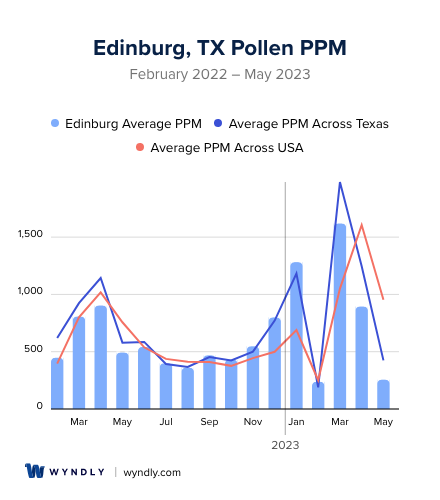
Edinburg, TX Pollen and Allergy Breakdown by Month
Grass
When is grass pollen highest in Edinburg, TX?
February has the highest grass pollen in Edinburg, TX with an average PPM of
When is grass pollen lowest in Edinburg, TX?
December has the lowest grass pollen in Edinburg, TX with an average PPM of
Tree
When is tree pollen highest in Edinburg, TX?
March has the highest tree pollen in Edinburg, TX with an average PPM of
When is tree pollen lowest in Edinburg, TX?
July has the lowest tree pollen in Edinburg, TX with an average PPM of
Weed
When is weed pollen highest in Edinburg, TX?
December has the highest weed pollen in Edinburg, TX with an average PPM of
When is weed pollen lowest in Edinburg, TX?
February has the lowest weed pollen in Edinburg, TX with an average PPM of
Edinburg, TX Pollen Monthly Breakdown by Pollen Type
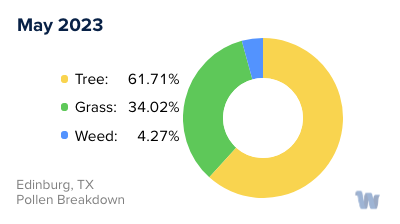
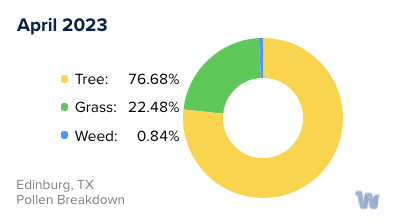
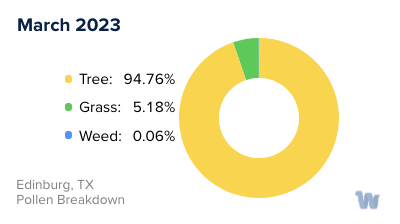
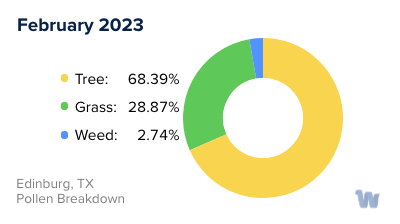

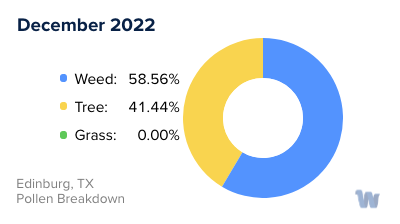
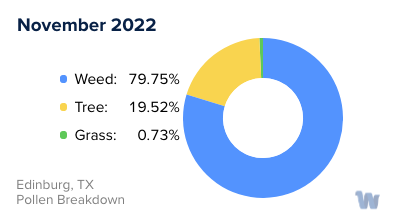






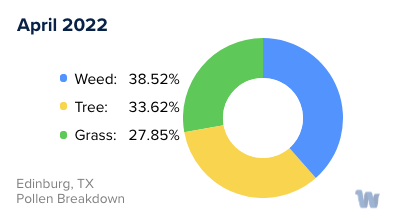
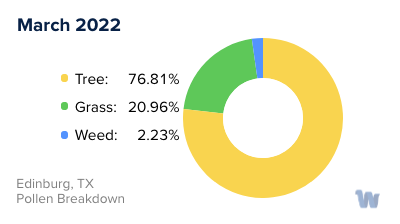
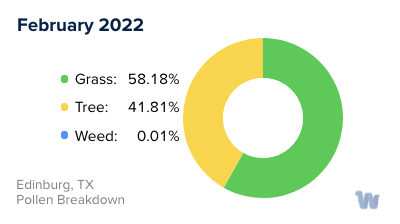
Pollen and Hay Fever in Edinburg, TX
Allergy season in Edinburg, Texas is a perennial event that can present challenges for residents and visitors alike. The most common trigger is pollen allergies, often referred to as hay fever. It's a bit of a misnomer, as hay is seldom the culprit and fever is not a symptom. But the watery eyes, sneezing, and runny nose are all too familiar to those who experience this condition.
Pollen is a fine powder produced by trees, grasses, and weeds as part of their reproductive process. In Edinburg, a variety of plant species contribute to the pollen count at different times throughout the year, making it a year-round concern.
In the spring, the primary source of pollen is trees. Oaks, pecans, and cedar are particularly prolific in this region. They start releasing pollen as early as February, peaking in March and April. During this time, the air can be thick with pollen, creating a hazy, yellowish mist that coats everything outdoors.
Summer brings a shift in pollen production, with grasses taking the lead. Bermuda grass, Bahia grass, and Timothy grass are all common in Edinburg and they can release a significant amount of pollen into the air. This is typically seen from May to July.
As fall approaches, weeds become the main pollen producers. Ragweed, with its ability to produce up to a billion pollen grains per plant, is a major contributor. Other weeds like sagebrush, lamb's quarters, and pigweed also contribute to the fall pollen count.
Pollen allergies are an integral part of living in Edinburg, Texas. Understanding the types of pollen and when they peak can help individuals prepare for and navigate the changing seasons. Remember, avoidance is key – on high pollen count days, it might be best to stay indoors, keep windows closed, and limit outdoor activities. After all, the beauty of Edinburg's diverse flora comes with a sneezy price for some of us!.


